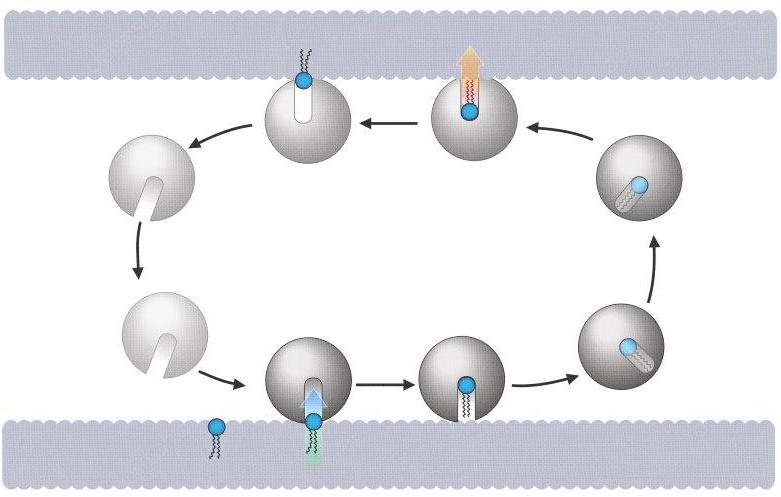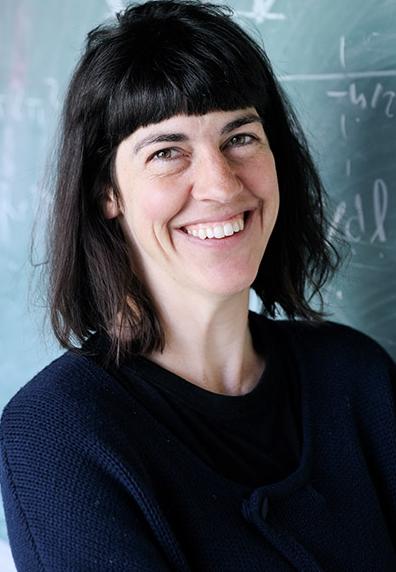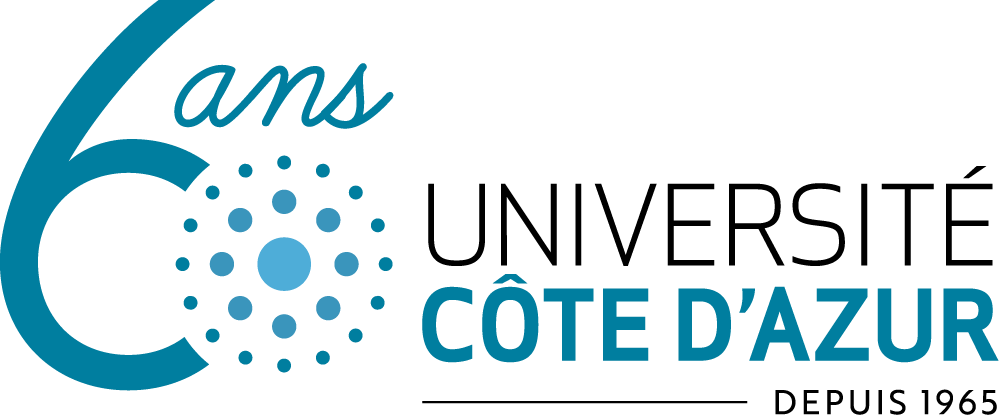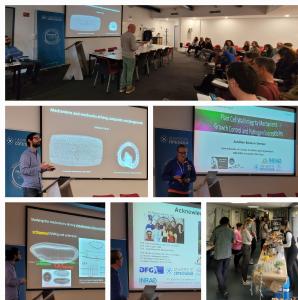Académie d'Excellence "Complexité et diversité du vivant"
6th Academy 4 Research Webinar - Lipid Transport - March 15th, 2022
- Research
- Science and society
- IDEX
- International
on the March 15, 2022
Online, Campus SophiaTech

It is our pleasure to announce the Academy 4 Research Webinars on Bio-Medical & Transdisciplinary Topics.
They take place on the 3rd Tuesday of the Month.
The 6th session on LIPID TRANSPORT took place on the 15th of March 2022 at noon (12pm) at IPMC SOPHIA ANTIPOLIS.
PROGRAM
12:00

"Role of Distance and Energy in Vectorial Lipid Transport"
Dr Guillaume DRIN
PhD, Research Director CNRS ,
"Lipid transport in health & disease" team,
IPMC CNRS SOPHIA ANTIPOLIS, FRANCE.
Email : drin@ipmc.cnrs.fr
Team website : https://www.ipmc.cnrs.fr/cgi-bin/site.cgi
Abstract: Lipid transfer proteins (LTPs) play a critical role in the distribution of lipids inside the eukaryotic cell by moving lipids across the cytosol between organelle membranes. Many of these populate particular regions called membrane contact sites in which the membranes of two distinct organelles are in close proximity, i.e. less than 80 nanometers away. Despite many progresses, some key aspects of lipid transfer processes remain poorly understood. Our project was to tackle two important issues. First, how much energy is used for lipid transfer? Second, to what extent the activity of LTPs benefits from the short distance between organelle membranes in contact sites? To address these points, we focused on ORP/Osh proteins that constitute a major family of LTPs; these proteins vectorially transfer lipids, either sterol or phosphatidylserine, which are made in the endoplasmic reticulum, to the Golgi and the plasma membrane, by exchange for a second lipid called PI(4)P. This exchange process is driven by a PI(4)P concentration gradient that is present at the ER/Golgi and ER/plasma membrane interface. For our project, which associates our team with Seminara's team, we devised assays to measure how much ATP is required to generate a PI(4)P gradient by PI4 kinase and PI(4)P phosphatase between two organelle-like membranes (liposomes) and to drive the transfer of sterol by the yeast protein Osh4p. With this complex reconstitution assays we obtained first estimations of the energy budget of sterol/PI(4)P exchange processes. Alongside, to examine how distance impacts lipid transfer, we set up a microscopy approach to measure the speed at which Osh4p exchanges sterol for PI(4)P as a function of distance between micrometric beads covered by membrane. These results will be combined with mathematical models of exchange processes to provide a clearer view on how the energy and geometry contribute to intracellular lipid transfer.
Bio: Dr DRIN has been working for more than 20 years on protein/membrane interactions. He studied how amphipathic peptides called vector peptides translocate through lipid bilayers, identified how certain protein senses the curvature of organelle membrane or connect these membranes, and more recently examined how intracellular proteins like ORP/Osh and STARD protein transfer lipids. He has an expertise in protein and lipid biochemistry, in fluorescence spectroscopy and other biophysical approaches. He currently leads the team” Lipid transport in health & disease“ at the IPMC (SOPHIA ANTIPOLIS).
Relevant Bibiography:
1. Ikhlef S, Lipp NF, Delfosse V, Fuggetta N, Bourguet W, Magdeleine M, Drin G. Functional analyses of phosphatidylserine/PI(4)P exchangers with diverse lipid species and membrane contexts reveal unanticipated rules on lipid transfer. BMC Biol. (2021) 19(1):248
2. Lipp NF, Ikhlef S, Milanini J, Drin G. Lipid Exchangers: Cellular Functions and Mechanistic Links With Phosphoinositide Metabolism. (2020) Front Cell Dev Biol 8:663 Invited review
3. Moser von Filseck J, Čopič A, Delfosse V, Vanni S, Jackson CL, Bourguet W, Drin G. INTRACELLULAR TRANSPORT. Phosphatidylserine transport by ORP/Osh proteins is driven by phosphatidylinositol 4-phosphate. (2015) Science 349:432-6
4. Moser von Filseck J, Vanni S, Mesmin B, Antonny B, Drin G. A phosphatidylinositol-4-phosphate powered exchange mechanism to create a lipid gradient between membranes. (2015) Nat Commun 6:6671
5. De Saint-Jean M, Delfosse V, Douguet D, Chicanne G, Payrastre B, Bourguet W, Antonny B, Drin G. Osh4p exchanges sterols for phosphatidylinositol 4-phosphate between lipid bilayers. (2011) J Cell Biol 195:965-78
12:30

"Mathematical Modeling of Lipid Transport"
Pr Agnese SEMINARA,
PhD, Research Director CNRS,
"Professore Ordinario" in fluid dynamics biology and machine learning,
University of GENOA, ITALY.
Email: agnese.seminara@unige.it
Team Website: https://rubrica.unige.it/personale/UkJAXVhh
Abstract: Lipid transport defines organelle’s lipid composition and is thus a vital component of the molecular biology of the cell. Sterol is produced in the endoplasmic reticulum, yet it only contributes 1-5% of lipids in its membrane whereas it is extremely abundant in the trans-Golgi and plasma membrane. To establish this steady gradient, specific proteins shuffle lipids back and forth across the cytosol. Our work starts from the observation in mammalian cells, lipid transfer massively occurs at specific contact sites where membranes are kept close to one another. In small yeast cells, transfer occurs more frequently independantly of these contact sites, suggesting that contact sites become mandatory to allow for fast lipid transport in large cells.
From the physical viewpoint, lipid transport is governed by molecular diffusion which results from the undirected motion of molecules kicked and buffeted in random directions by thermal agitation. This process can be precisely characterized mathematically and coupled to the extraction of lipids from donor membranes and loading onto receptor membranes. We will discuss a simple model focusing on the distribution of two key lipids and of their bidirectional transport ensured by a lipid transport protein of the Osh family. Our model yields quantitative predictions that can be compared to in vitro experiments to first derive the minimal realistic model of lipid transport and second obtain the rates of loading and unloading from data. I will discuss how our framework can be extended to include energy consuming transport and spatial discretization through microfluidics.
Bio: Pr SEMINARA was born in Genova (Italy) on Jan 16th 1980. She graduated from the University of Genova on march 2004 with a master thesis on the role of turbulence for cloud microphysics. In 2004, she moved to Nice (France) for her PhD where she worked at the Institut non linéaire de Nice, under the supervision of Antonio CELANI and Andrea MAZZINO. She graduated in 2007 with a thesis on turbulent transport, from the statistics of passive scalar fields transported by turbulent flows, to the fate of droplets condensing in a turbulent cloud, to the properties of rocky costs. In Jan 2008 she switched subject (and continent): she moved to Boston to work in the group of Michael BRENNER at the School of Engineering and Applied Sciences at Harvard University on the physics of microbial systems. She obtained a Marie CURIE international outgoing fellowship 2008-2010 (HAVARD) and 2010-2011 (Institut PASTEUR, in the group of Massimo Vergassola). In 2012 I went back to Harvard as an instructor of Applied Mathematics. In 2013 I started an independent position at CNRS and I moved back to Nice, at the Institut de Physique de Nice. In 2021 I joined the University of GENOA to start her newly funded ERC project on Physics informed algorithms for sensing and navigating turbulent environments.
She works on diverse problems at the interface of physics and biology, from the biomechanics of bacterial biofilm growth to the violent discharge and atmospheric dispersal of fungal spores, to the computational principles that govern navigation in diverse organisms from mice and octopuses to sea robins and other marine organisms. The thread that connects all of these systems is their fluid environment. She is fascinated by the diversity of solutions organisms evolved to understand their fluid environment, even when turbulence makes it unpredictable and risky.
More on Pr SEMINARA here.
--------------------
ORGANIZERS:
Academy of Excellence 4 "Complexity & Diversity of the Living Systems"
Academy of Excellence 5 "Human Societies, Ideas and Environments"
Graduate School and Research HEALTHY - Health Science Ecosystems
Graduate School and Research LIFE - Life and Health Sciences
Institute NeuroMod - Cognitive Systems, Normality and Pathology of the Human Brain and Computational Neurosciences
Labex SIGNALIFE - Network for Innovation on Signal Transduction Pathways in Life Sciences




















